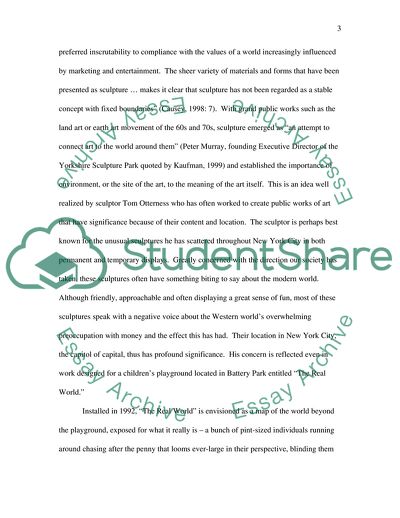Cite this document
(The Site of Art Essay Example | Topics and Well Written Essays - 1750 words, n.d.)
The Site of Art Essay Example | Topics and Well Written Essays - 1750 words. https://studentshare.org/visual-arts-film-studies/1735678-why-has-the-site-of-art-become-increasingly-significant-for-artists-since-the-late-1960s-discuss-with-specific-reference-to-two-art-piecesprojects
The Site of Art Essay Example | Topics and Well Written Essays - 1750 words. https://studentshare.org/visual-arts-film-studies/1735678-why-has-the-site-of-art-become-increasingly-significant-for-artists-since-the-late-1960s-discuss-with-specific-reference-to-two-art-piecesprojects
(The Site of Art Essay Example | Topics and Well Written Essays - 1750 Words)
The Site of Art Essay Example | Topics and Well Written Essays - 1750 Words. https://studentshare.org/visual-arts-film-studies/1735678-why-has-the-site-of-art-become-increasingly-significant-for-artists-since-the-late-1960s-discuss-with-specific-reference-to-two-art-piecesprojects.
The Site of Art Essay Example | Topics and Well Written Essays - 1750 Words. https://studentshare.org/visual-arts-film-studies/1735678-why-has-the-site-of-art-become-increasingly-significant-for-artists-since-the-late-1960s-discuss-with-specific-reference-to-two-art-piecesprojects.
“The Site of Art Essay Example | Topics and Well Written Essays - 1750 Words”. https://studentshare.org/visual-arts-film-studies/1735678-why-has-the-site-of-art-become-increasingly-significant-for-artists-since-the-late-1960s-discuss-with-specific-reference-to-two-art-piecesprojects.


